The Sun Salutation is widely known as Surya Namaskara. As we know, the Sun is the only source of energy and sustains life on this planet. Sun Salutation is one of the powerful kriyas to instill the sun’s energy in your body. Sun salutation is a way to show gratitude towards Sun. It is a sequence of 12 powerful yoga poses and is a complete body workout with numerous benefits. It is a great cardiovascular workout. Surya Namaskara is known to have a positive impact on the mind also. In this post, we will see how to do a Sun salutation step by step.
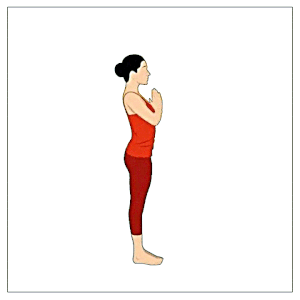
Things to keep in mind before starting Sun Salutation:
- You must perform the Surya Namaskara facing the Sun’s direction. (i.e. East when you’re practicing in the morning and West direction if you are doing it in the evening)
- A little warm-up is better before practicing Surya Namaskara. It is a good idea to do some Sukshma Vyayama or gentle warm-up stretches before you start with the Surya Namaskar rounds. This helps remove restlessness in the body and prepares it for Surya Namaskar yoga postures.
- Perform each step with proper breathing as mentioned in the article. It is very important to synchronize your breathing with the steps.
- And lastly, do your Surya namaskars gracefully, with a smiling face and gratitude towards the sun.

How to do a Sun Salutation?
You need to learn how to do a Sun Salutation properly. As said, it is a sequence of 12 asanas. Each one of them affects different parts of the body. Before practicing the complete salutation, you can try each of these asanas individually. And when you think your form is getting better in each asana, you can start the complete salutation. Be mindful when you practice asanas. It will multifold your benefits.
Step 1. Pranamasana (Prayer pose):
Facing the sun’s direction, stand at the edge of your mat, and keep your feet together. Expand your chest and relax your shoulders. As you breathe in, lift both arms from the sides, and as you exhale, bring your palms together in front of the chest in a prayer position.
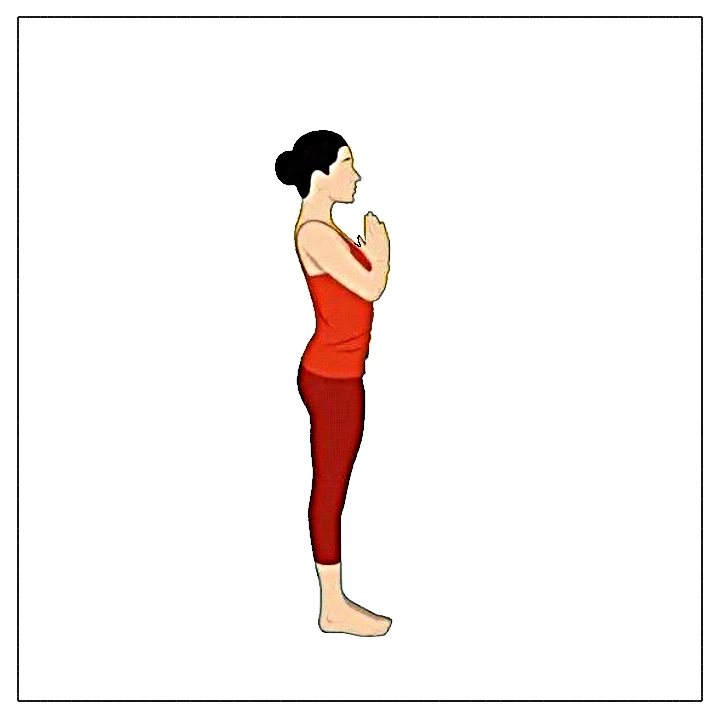
Benefit: Helps to relax and to calm the body and the mind.
Step 2. Hasta Uttanasana (Raised arms pose):
Breathing in, lift the arms to the back, keeping the biceps close to the ears. In this pose, the effort is to stretch the whole body up from the heels to the tips of the fingers.

Benefit: Stretches the chest and the abdomen, and lifts energy through the body.
Step 3. Hasta Padasana (Standing forward bend):
Breathing out, bend forward, and bring the hands down to the mat beside the feet. Try to keep your knees and spine straight. Do it comfortably, don’t force your body.
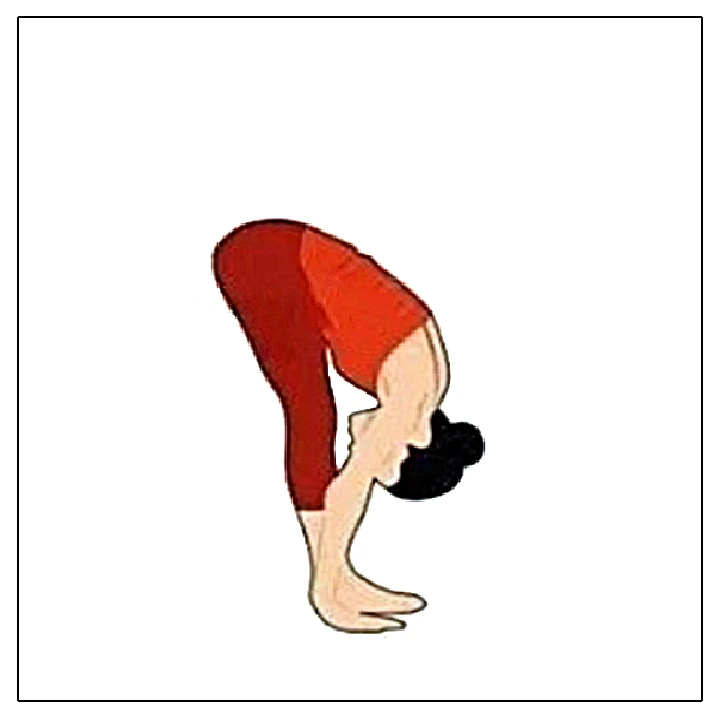
Benefit: Massages abdominal organs, increases digestion power and increases blood flow to the brain. Stretches the spine and gives relief to female disorders.
Step 4. Ashwa Sanchalanasana (Equestrian pose):
Breathing in, push your right leg as back as possible. Bring the left knee to the front and look up. Ensure that the left foot is exactly in between the palms and that the left thigh touches your chest.
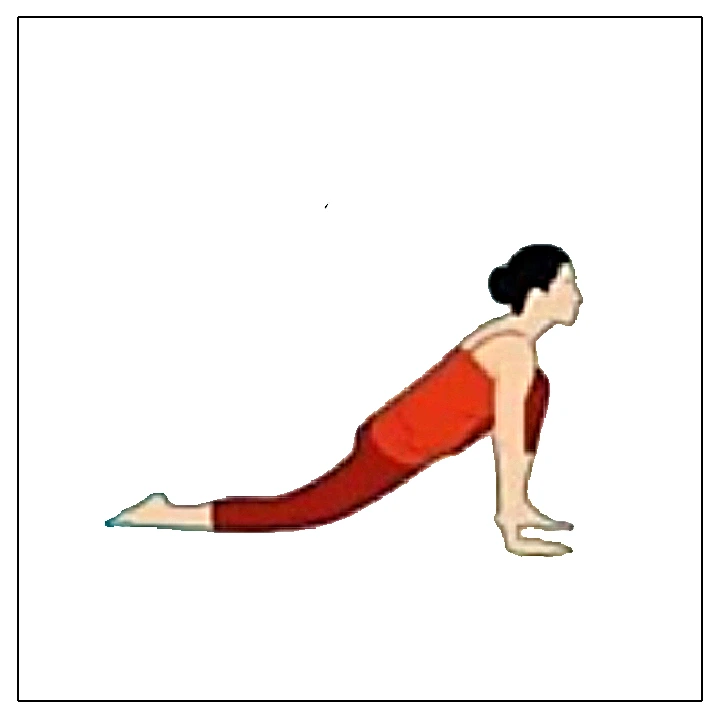
Benefit: Stretches the quadriceps, iliopsoas muscles, and spine, stimulates abdominal organs, and increases mental power.
Step 5. Phalakasana (Plank pose):
As you breathe out, take the left leg back and bring the whole body in a straight line.
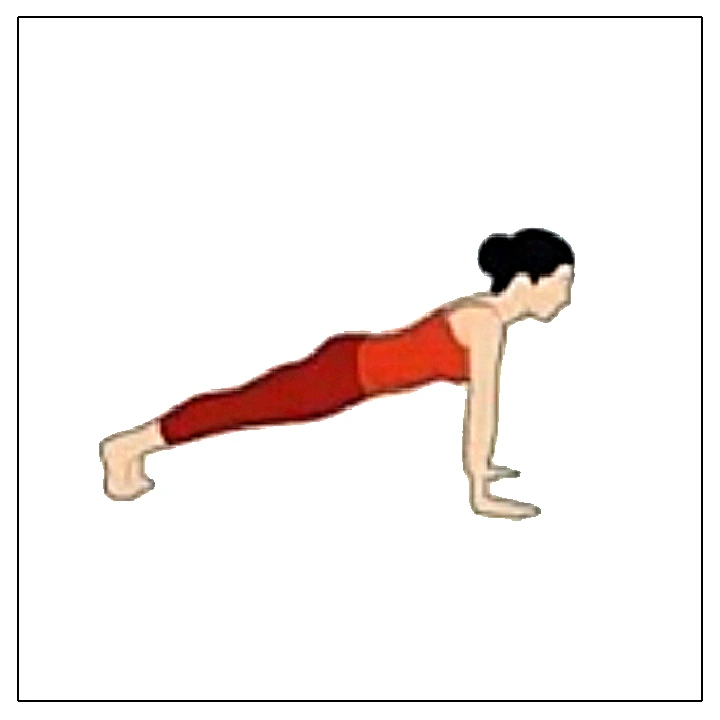
Benefit: Stretches the chest and the abdomen, and lifts energy through the body.
Step 6. Ashtanga Namaskara (Salute with eight parts or points):
Gently bring your knees down to the floor. Rest your chest and chin on the floor. Raise your posterior a little bit. The two hands, two feet, two knees, chest, and chin (eight parts of the body) should touch the floor. Remember you don’t inhale or exhale during this pose.

Benefit: Develop the chest and strengthens the arms.
Step 7. Bhujangasana (Cobra pose):
While inhaling, slide forward and raise the chest up into the Cobra pose. Look up at the ceiling. Make a gentle effort to push the navel down. Ensure you’re stretching just as much as you can and not forcing your body.
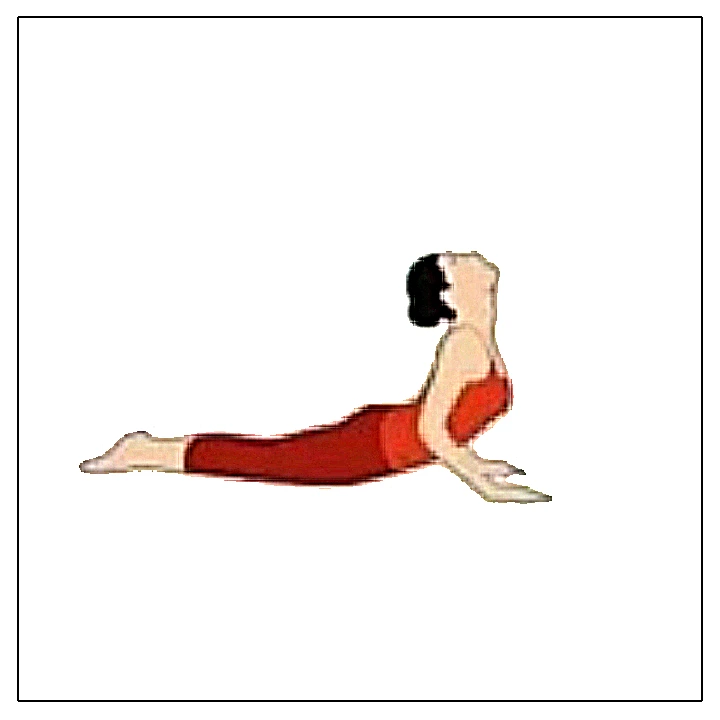
Benefit: Relieves tension in the back and spine. Stimulates and expands the chest and abdominal organs.
Step 8. Parvatasana (Inverted V Pose):
Breathing out, lift the hips to bring the body into an inverted ‘V’ pose. Try to look at your navel. If possible, try and keep the heels on the ground and make a gentle effort to lift the tailbone, going deeper into the stretch.

Benefit: Strengthens legs and arms. Stretches calf muscles and spine. Relieves varicose veins.
Step 9. Ashwa Sanchalanasana (Equestrian pose):
Breathing in, bring the right foot forward in between the two hands. The left knee goes down on the floor. Place the right foot exactly between the two hands and the right calf perpendicular to the floor. Press the hips down and look upwards.

Benefit: Stretches the quadriceps, iliopsoas muscles, and spine, stimulates abdominal organs, and increases mental power.
Step 10. Hastapadasana (Standing forward bend):
Breathing out, bring the left foot forward. Keep the palms on the mat beside the feet. You may bend the knees, if necessary.

Benefit: Massages abdominal organs, increases digestion power, and increases blood flow to the brain. Stretches the spine and gives relief to female disorders.
Step 11. Hastauttanasana (Raised arms pose):
Breathing in, roll the spine up. Lift the arms up and back, keeping the biceps close to the ears.
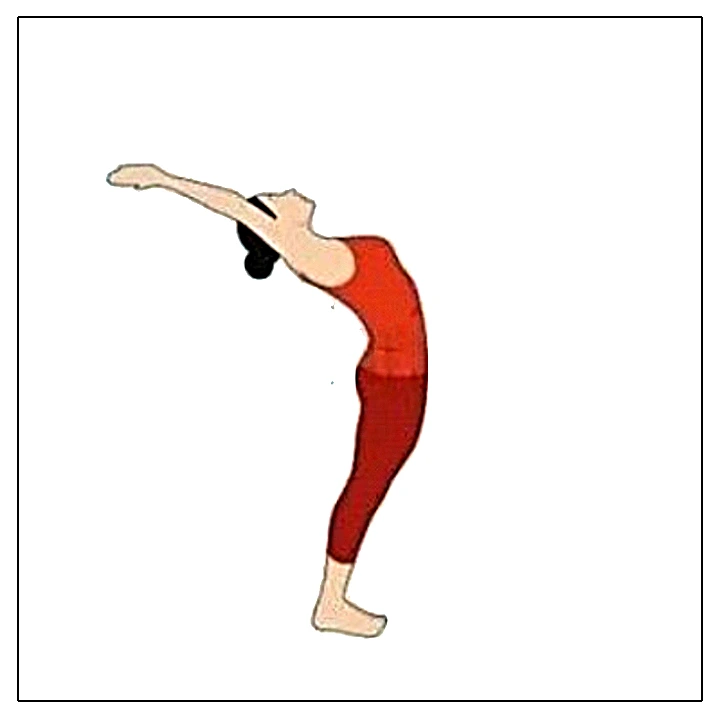
Benefit: Stretches the chest and the abdomen, and lifts energy through the body.
Step 12. Pranamasna (Prayer Pose):
As you exhale, first straighten the body, then bring the arms down. Join your palms in front of the chest in a prayer pose and again gently bring them down. Relax in this position and observe the sensations in your body.

Benefit: Helps to relax and to calm the body and the mind.
This completes one set of Surya Namaskara.
What are the Benefits of Sun Salutation?
The benefit of each asana or each pose is already mentioned above. When you start practicing Surya Namaskara, you will get to know why it is called a complete body workout. It works on almost every organ and every muscle of the body. Here are some overall benefits of this yoga practice.
- Helps maintain cardiovascular health
- Stimulates the nervous system
- Helps in stretching, flexing, and toning the muscles
- An excellent exercise for weight loss management (Rapid Surya Namaskara helps in weight loss)
- Strengthens the immune system
- Enhances cognitive functions
- Improves overall health, strengthens the body, and relaxes the mind
Precautions/ Tips to remember:
- Practicing Surya Namaskara is best done early morning on an empty stomach.
- If you are a beginner, try to do it slowly, focusing on the correct posture. Once you attain the correct posture in every step you can increase the speed.
- You can start with only one set, gradually increasing the number to 12 sets per day. (There’s no harm in doing more than that, but watch how much your body allows)
Conclusion:
Sun Salutation is the flow sequence of twelve gracefully linked asanas. The twelve asanas combined performed gracefully and with devotion, can change your life for the good. You will observe a massive change at both physical and mental levels. It is not only a complete body workout but also a life-transforming workout.
To learn about more Yogasanas, please visit yogtastic.

Great web site you have here.. It’s difficult to find quality
writing like yours nowadays. I really appreciate individuals like you!
Take care!!
Everything is very open with a really clear explanation of the issues. It was really informative. Your website is very useful. Many thanks for sharing!
Great content! Super high-quality! Keep it up!
Thanks… Glad you liked it!!
This is one of the most informative posts I’ve read on this topic. Your clear explanations and real-life examples are incredibly helpful.
This topic is really interesting.
Thank you for your articles. They are very helpful to me. May I ask you a question?
You could definitely see your enthusiasm in the work you write. The sector hopes for even more passionate writers like you who aren’t afraid to say how they believe. At all times go after your heart.
You completed several fine points there. I did a search on the matter and found the majority of persons will go along with with your blog.
Wow that was odd. I just wrote an incredibly long comment but after I clicked submit my comment didn’t appear. Grrrr… well I’m not writing all that over again. Anyways, just wanted to say superb blog!